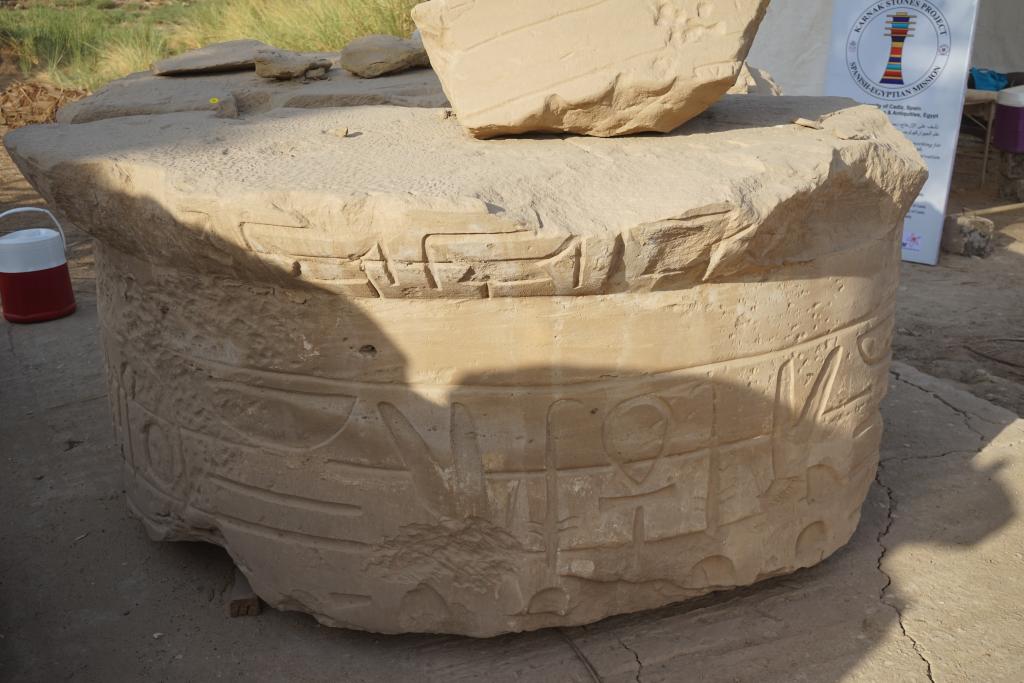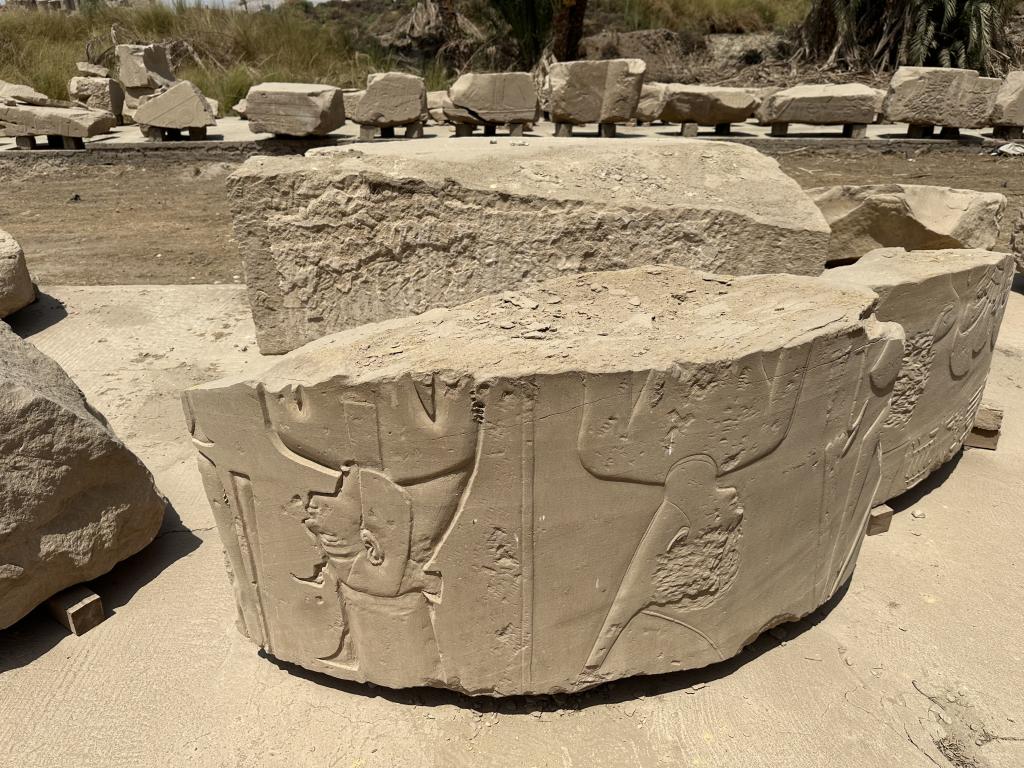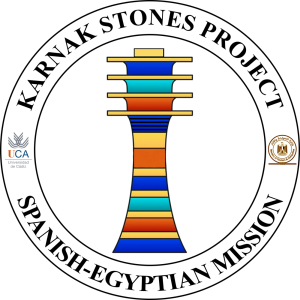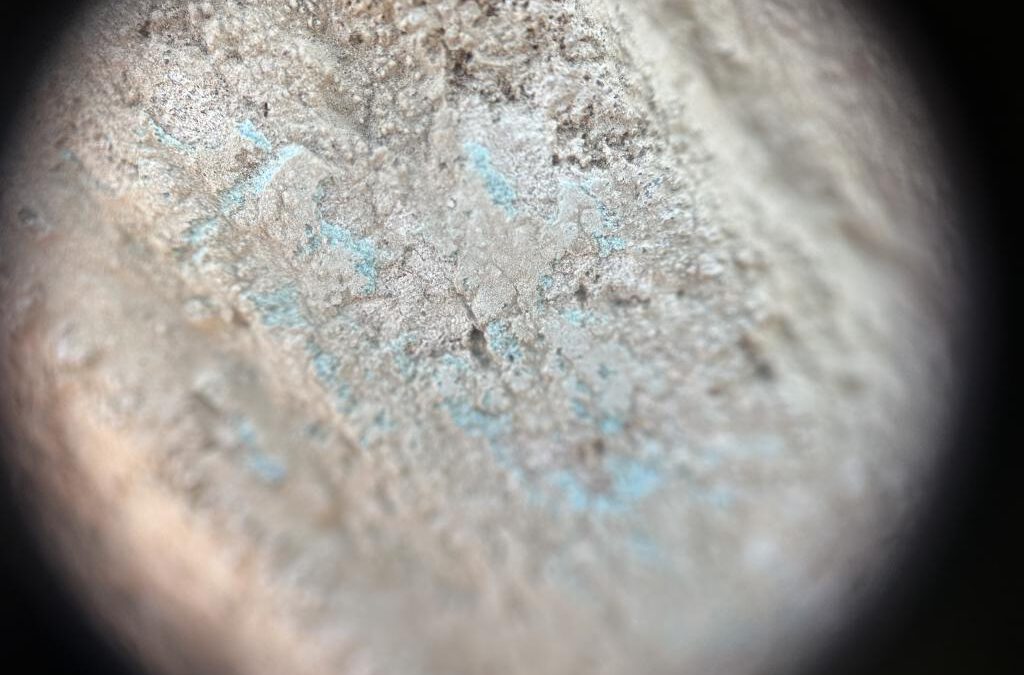s we carefully examine the stone blocks at Karnak, we’ve discovered remnants of something truly remarkable: traces of the vibrant pigments that once brought the temple walls to life. These ancient hues, red, blue, yellow, and black, offer a rare glimpse into the artistry and craftsmanship of ancient Egyptian civilization. The pigments, still faintly visible on some of the stone surfaces, are more than just remnants of color; they are windows into the past, revealing the vibrancy and detail that once defined Karnak’s architectural splendor. To study these pigments, we used advanced color analysis techniques to measure the shifts in chroma and hue caused by centuries of exposure to the elements.
Over time, the once vivid colors have faded, weathered by the extreme heat, sunlight, and sandstorms of Luxor’s climate. By measuring these shifts, we gain insights not only into the original hues of the pigments but also into the environmental factors that have contributed to their deterioration. The presence of these pigments is a powerful reminder of the intricate artistry that adorned Karnak’s stone blocks. The ancient Egyptians used color to bring life to their sacred spaces and these colors were not just decorative; they had symbolic meaning, often representing gods, royal authority, and divine protection.
The reds, blues, yellows, and blacks would have formed part of intricate scenes depicting religious rituals, the lives of pharaohs, and mythological stories, all designed to convey the power and majesty of the divine. By studying the chemical composition of these pigments, we’re able to identify the natural materials used by the ancient craftsmen. For example, red pigments were often made from ochre or hematite, while blue pigments may have been derived from the semi-precious stone lapis lazuli. These materials were sourced from various regions, some far beyond Egypt, demonstrating the extensive trade networks and the wealth of knowledge that the ancient Egyptians had access to. In
addition to offering insights into the pigments themselves, this analysis also provides valuable information about the techniques used in their application. The wear patterns and the types of brushes or tools used by the artists can be deduced from the way the pigments have been applied to the stone, further shedding light on ancient Egyptian artistic practices. Beyond their scientific and historical value, these pigments evoke a sense of wonder about the visual splendor of Karnak as it once stood. The temple walls, which today are marked by the patina of time, would have been a riot of color in their prime, an artistic achievement that is hard to imagine in the absence of those vibrant hues. As we continue our work at Karnak, the study of these pigments not only helps us understand the site’s past but also informs our conservation efforts. By analyzing how these colors have changed over time, we can develop better strategies for preserving and protecting these fragments of ancient Egyptian artistry for future generations to admire and study. The traces of red, blue, yellow, and black that we find on the stone blocks are more than just colors; they are the echoes of a bygone era, and through careful analysis, we are piecing together the vibrant visual history of Karnak.



